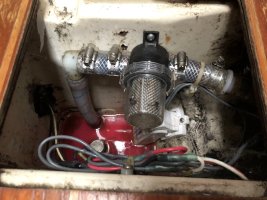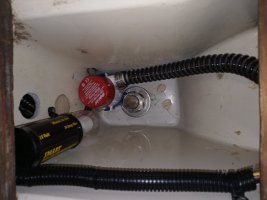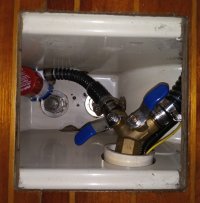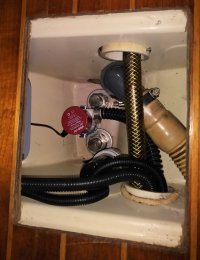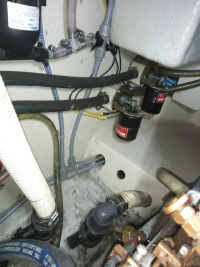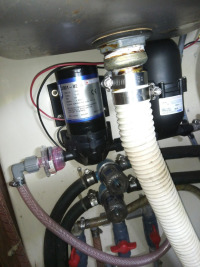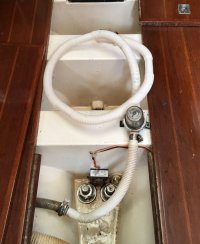Agreed. Reporting the specific problems you experienced in your second post was informative and unemotional. Refering to them as "near worthless," in your first post, however, without further explanation, was just name-calling. Seems I've read other posts where readers were urged to "chuck their Rule centrifugals over the railings." Without background explanation, such posts are unhelpful and misleading.I would not classify other owner's reports of pump failings as "emotional", however.
I think your first complaint about centrifugal pumps is valid, but the other two are less so.
1) Yes, they allow backflow when the pump stops--this may make them unsuitable for applications where the user desires a "dry" bilge after pumping, or where the backflow causes repeated cycling of the float switch.
2) Yes, they can airlock (which prevents pumping at startup) IF the discharge line has a blockage that holds static water in the line before the pump gets up to speed. The common causes of this are (a) check valves, and (b) sags in the discharge line where water is trapped after pumping stops (effectively, like the p-trap under your sink). This is not a fault of the pump, but an issue with the discharge hose installation. In the 32-3, there seems to be no sag points in the discharge hose (and I won't use check valves). Accordingly, I have never had a "airlock" blockage in my centrifugal pumps. If the O-34 was built with sags in the bilge discharge hoses, then the MFG should have been aware of this and installed diaphragm pumps at the factory. If an O-34 owner later unwittingly changes to centrifugal pumps, he would likely, then, encounter problems. But that is a function of the particular installation and not a "fault" of the pump.
3) Yes, their output rate is lower than the rate stamped on the label. Such is the case with most mechanical systems. My 51A Motorola alternator has likely never put out that much power. If it ever did, it was in the Motorola lab, under controlled conditions, with a zero resistance load attached. My "50W" solar panels have an open-circuit-voltage of 21.8V and a short-circuit-current of 3.1A. Sounds like they should put out 67.58 W (V x A). In truth, they rarely, if ever, put out 50W. These numbers are just engineering specifications of the design/theoretical limitations of the systems they describe. The (very high quality, I assume) Sea-Flow vane pumps that trickdhat shows above state an "open flow" rate of 8gpm (480 gph). But tell me how to achieve "open flow" in an actual bilge installation.
Judging from what you described in your second post, it may be that centrifugal bilge pumps (regardless of mfg) are a bad fit for the O-34. Owners of other boats may want to understand why, so they can make their own best decisions in regards to their own boats.
Last edited:

